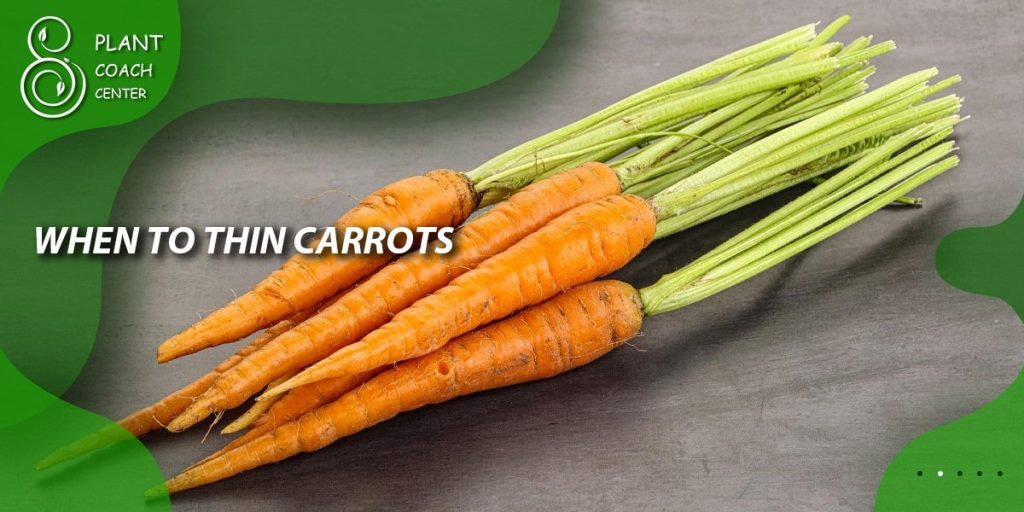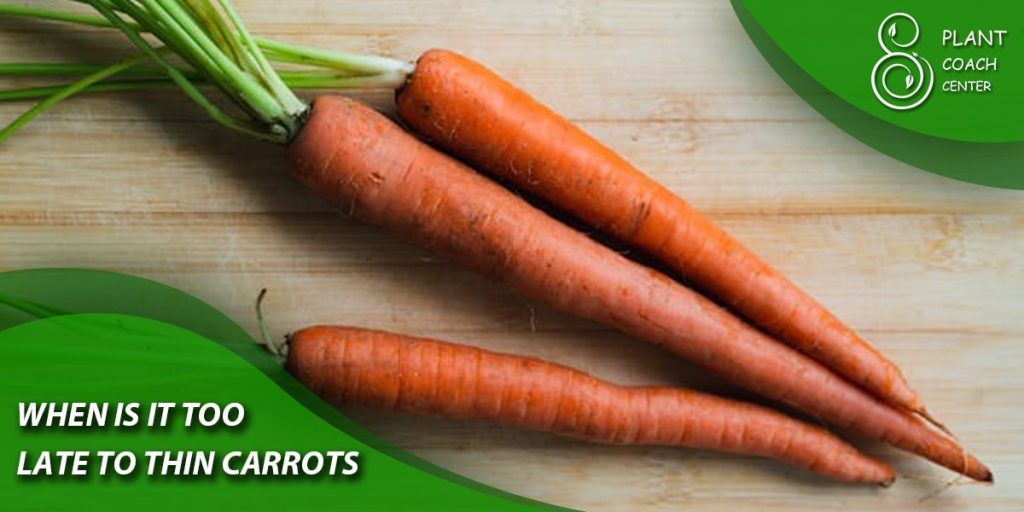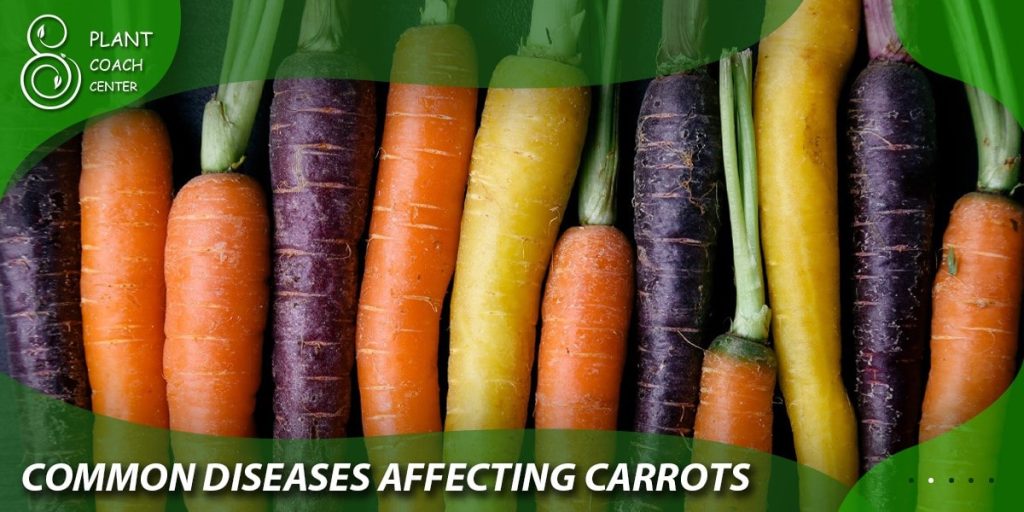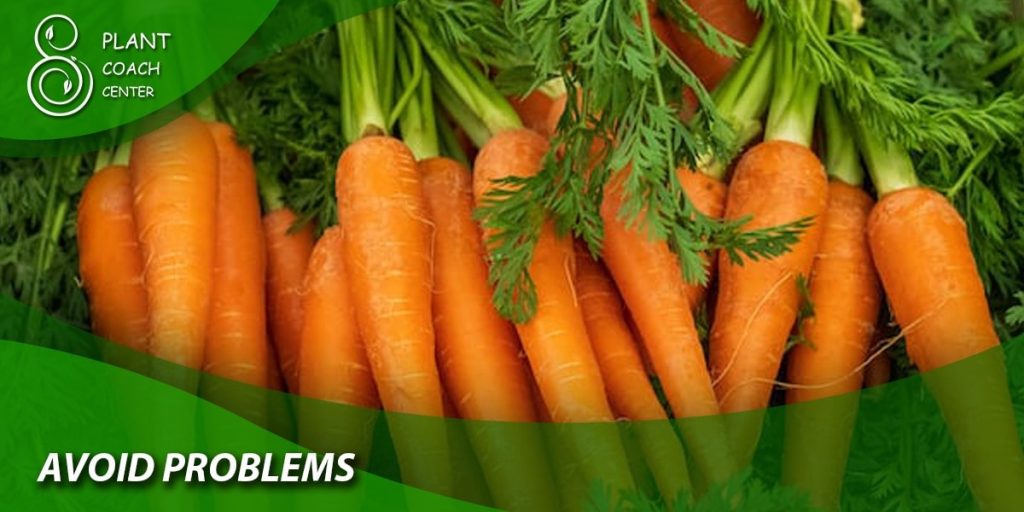When is it Too Late to Thin Carrots
Carrots are a popular vegetable in gardens and farms around the world, prized for their sweet flavor and versatility in cooking. However, many growers struggle with common carrot problems such as stunted growth, misshapen roots, and pest infestations. One of the most important steps in preventing these issues is proper thinning of carrot seedlings.
In this article, we will explore the best practices for thinning carrots, the risks of late thinning, and common carrot problems and solutions. We will also discuss when it is too late to thin carrots, and what to do if you have missed the recommended window for thinning. This article is brought to you by plantcoachcenter.com, a leading resource for plant coaching and gardening tips.
Understanding Carrots and the Importance of Thinning
Carrots are a root vegetable that grow best in loose, well-draining soil with plenty of sunlight and water. Carrot seeds are tiny and are usually planted in rows, with multiple seeds per inch. While this ensures a high germination rate, it also leads to overcrowding if not properly thinned. Thinning is the process of removing excess seedlings to allow for proper spacing and healthy growth. Thinning is important for carrots for several reasons:
- Overcrowding can lead to stunted growth and misshapen roots.
- Crowded plants compete for resources such as water, nutrients, and sunlight.
- Overcrowding can increase the risk of pests and diseases.

When to Thin Carrots
The timing for thinning young carrots depends on several factors, including the variety of carrot, the size of the seeds, and the growing conditions. As a general rule, carrots should be thinned once they reach 2-3 inches in height, and again when they reach 4-5 inches in height. Signs that carrots need thinning include:
- Crowded seedlings that are touching or overlapping.
- Seedlings that appear weak or spindly.
- Uneven growth or misshapen roots.
Proper spacing for healthy carrot growth is also important. Carrots should be spaced 2-4 inches apart, depending on the variety and growing conditions. Tools and techniques for thinning carrots include:
- Hand-thinning with scissors or a knife.
- Pulling out excess seedlings carefully to avoid disturbing the remaining plants.
- Using a hoe or other tool to thin rows quickly and efficiently.
Risks of Late Thinning
Thinning carrots too late can lead to a variety of problems, including:
- Stunted growth and misshapen roots.
- Increased risk of pest and disease infestations.
- Reduced overall yield.
- Damage to remaining plants during thinning.
Late thinning is generally defined as thinning after the carrots have reached 4-5 inches in height. The longer you wait to thin your carrots, the greater the risk of these problems. However, it is still possible to thin carrots later in the season, if done carefully and with the right tools.

When is it Too Late to Thin Carrots?
Determining when it is too late to thin carrots depends on several factors, including the variety of carrot, the growing conditions, and the stage of growth. As a general rule, carrots should be thinned before they reach 4-5 inches in height.
However, if you have missed the recommended window for thinning, you can still thin your carrots, but with greater care and attention to avoid damaging the remaining plants. Signs that it is too late to thin carrots include:
- Thick, woody roots that are difficult to pull out.
- Crowded plants that are intertwined and difficult to separate.
- Misshapen roots or stunted growth.
If you are unsure whether it is too late to thin your carrots, consult with a plant coach or experienced gardener for advice.
Common Carrot Problems and Solutions
Carrots are susceptible to a variety of pests and diseases, which can cause stunted growth, misshapen roots, and reduced yield. Common carrot pests include:
- Carrot rust flies, which lay eggs near the base of the plant and can cause root damage.
- Aphids, which suck sap from the plant and can transmit viruses.
- Nematodes, which are microscopic worms that can damage roots and reduce yield.
Common carrot diseases include:
- Carrot blight, which causes blackened leaves and rotting roots.
- Powdery mildew, which appears as a white, powdery coating on the leaves.
Prevention and treatment options for carrot problems include:
- Proper thinning and spacing to reduce overcrowding.
- Regular watering and fertilization to promote healthy growth.
- Mulching to retain moisture and prevent weed growth.
- Organic pest and disease control methods such as companion planting, insecticidal soap, and neem oil.
- Crop rotation to reduce the risk of soil-borne diseases.
- Maintaining good garden hygiene by removing plant debris and cleaning tools between uses.
Common Diseases Affecting Carrots: Prevention and Treatment

Carrots are susceptible to a range of diseases that can affect their growth and yield. Some of the most common carrot diseases include carrot blight, powdery mildew, and root rot.
Carrot blight is a fungal disease that affects the leaves and roots of the plant. It typically appears as blackened or brown spots on the leaves, and can cause the roots to rot and become discolored. Carrot blight is caused by several different fungi, including Alternaria, Cercospora, and Mycocentrospora.
The disease can spread quickly in wet and humid conditions, so proper ventilation and watering practices are important for prevention. Treatment options for carrot blight include removing infected plants and reducing humidity levels in the growing area. Fungicides can also be used to control the spread of the disease.

Powdery mildew is another fungal disease that affects the leaves of the plant. It appears as a white, powdery coating on the leaves and stems, and can cause the leaves to yellow and die off. Powdery mildew is caused by several different fungi, including Erysiphe and Sphaerotheca. The disease can spread quickly in dry and humid conditions, so proper watering and ventilation practices are important for prevention. Treatment options for powdery mildew include removing infected plants and applying fungicides.
Root rot is a fungal disease that affects the roots of the plant. It typically appears as a soft, mushy area on the roots, and can cause the roots to rot and become discolored. Root rot is caused by several different fungi, including Pythium and Rhizoctonia. The disease can spread quickly in wet and poorly-drained soils, so proper soil management and watering practices are important for prevention. Treatment options for root rot include removing infected plants and improving soil drainage.
Thinning Carrots Is an Important Step
Conclusion
Thinning carrots is an important step in promoting healthy growth and preventing common carrot problems. It is best to thin your carrots when they reach 2-3 inches in height, and again when they reach 4-5 inches in height. Late thinning can lead to stunted growth, misshapen roots, and increased risk of pests and diseases. However, if you have missed the recommended window for thinning, it is still possible to thin your carrots, but with greater care and attention. By following these tips and practicing good garden hygiene, you can enjoy a bountiful harvest of healthy, delicious carrots. For more information on plant coaching and gardening tips, visit plantcoachcenter.com.
How do I know when to thin my carrots?
Carrots should be thinned once they reach 2-3 inches in height, and again when they reach 4-5 inches in height.
What happens if I don't thin my carrots early enough?
Overcrowded carrots can lead to stunted growth, misshapen roots, and increased risk of pests and diseases.
Can I still thin my carrots if it's past the recommended time?
Yes, you can still thin your carrots, but late thinning can increase the risk of damaging the remaining plants and reducing overall yield. It's best to thin your carrots before they reach 4-5 inches in height.
How can I prevent common carrot problems?
Proper thinning and spacing, regular watering and fertilization, mulching, organic pest and disease control methods, and crop rotation can all help prevent common carrot problems.
What are some common carrot pests and diseases?
Common pests include carrot rust flies, aphids, and nematodes, while common diseases include carrot blight and powdery mildew.
What is plant coaching?
Plant coaching is a process of guiding and advising plant growers to help them achieve healthy and successful plant growth.







